
Essential Oils - Aromatherapy
This Topic Covers:
Essential oils and their therapeutic healing properties. In depth information on how they are used and which
conditions and illness they can be used for.
How to purchase quality essential oils, consumer precautions, clinical
research studies, and recommended sites to purchase essential oils, and more...
"...the leaf thereof for medicine” (Ezekiel 47:12).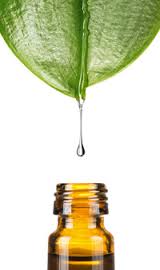
What Are
Essential Oils
How
Essential Oils Are Extracted
History of Essential Oils
Healing
Oils of the Bible
The
Science Behind Aromatherapy
How Do
Essential Oils Work
The Way
Essential Oils Affect the Body
Essential Oils
Therapeutic Properties
Essential Oils and Pharmaceuticals Compared
Practitioner
Treatment
Find a
Registered Aromatherapist
Finding a
Qualified Aromatherapy Practitioner
Questions to Ask About Treatment
Essential Oils in Cancer Treatment
Methods of Using Essential Oils
Formulas for Use
Safety Issues
Storing of
Essential Oils Precautions
Consumer
Precautions When Purchasing Essential Oils
Quality Defined
Essential Oils' Industry Standard Testing
Clinical Research
Search Clinical Research Studies
Online Essential Oils
Research Database
Exploring Aromatherapy Resources
Therapy Treatment Ailment Guide
Recommended Essential Oils Online Products
Aromatherapy (Essential Oils) Journals
Online
Courses -
Learn Aromatherapy
Professional Organizations
Introduction
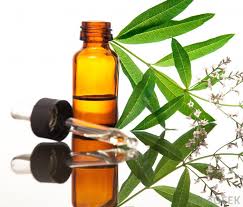
Humankind has used plants for healing for thousands of
years, and it's from this tradition of that knowledge, the use of aromatic plant
compounds medicine began.
Essential oils
contain hundreds of organic constituents, including hormones, vitamins and other
natural elements that work on many levels. They are 75 to 100 times more
concentrated than the oils in dried herbs.
Essential oils are used by the plants in somewhat
the same way they are by humans - they
fight
infection, contain hormone-like compounds, initiate cellular regeneration, and
work as a chemical defense against fungal, viral, and bacterial
foes.
Despite their foliar origins however, essential oils have a similar structure
to some compounds found in blood and tissues, allowing them
to be
compatible with our own physiology. They have unique therapeutic
properties .
Essential oils are used preventatively to maintain
health, as well as during acute and chronic stages of illness. Essential oils
are a natural plant based medicine designed to support and affect the whole
person. They are used to assist the body's immune system and to support our
natural ability to maintain balance, and to heal. They connect us back to
nature.
Using oils drawn from
nature’s own medicine cabinet of flowers, trees, seeds and roots, man can
tap into God’s healing power to heal oneself from almost any pain, finding
relief from many conditions and rejuvenate the body. Without the scientific
evidence of understanding how essential oils work, we would simply call it
“miraculous.” Yet, simply it is since they are endowed with God’s spoken
word as living, vibrant substances carrying within them the healing power He
offers us.
Modern medicine
has attempted to duplicate the chemical constituents and healing
capabilities of essential oils, but cannot. Man-made
pharmaceuticals lack the intelligence and life-force found in the healing
oils. Most synthetic prescriptions have multiple undesirable side
effects—even some that are deadly.
Essential oils have no serious side effects that are
deadly. Many people have reported authentic healing when using them—though
everyone may not experience the same results as family history, lifestyle,
and diet plays a significant role in the body’s healing process. Essential
oils work together in harmony, making them inherently safe, unlike
when multiple prescription drugs are taken, causing drug-interaction, other
health issues and sometimes even death.
Why do I need to know about essential
oils?
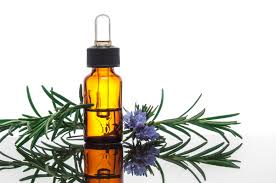
takingcharge.csh.umn.edu -
© Regents of the University of Minnesota and Charlson Meadows. All
rights reserved.
There is a growing body of research from
laboratory and clinical studies that
points to the remarkable healing properties of essential oils. They are widely available in markets,
co-ops, and pharmacies and are increasingly used in clinics and hospitals.
While most essential oils
are safe and free of adverse side
effects when used properly, it is important for you to
pay attention to dosage, purity,
administration, and possible interactions with other medications you might
be taking. You should also look for quality products, as there can be big
differences between what a professional aromatherapist would use and what is
sold in retail stores.
Reference
www.encyclopedia.com
Today, the use of holistic aromatherapy is widely
accepted in Europe, particularly in Great
Britain, where it is
commonly used in conjunction with massage as both a psychological and
physiological healing tool. In the
United States, where aromatherapy
is often misunderstood as solely a cosmetic treatment, the mainstream
medical community has been slower to accept its use.
Source
www.budwigcenter.com
Everything has an electrical frequency or vibration, including food, our
bodies, and even disease that can be measured in Megahertz (MHz). The
frequency of essential
oils are
actually some of the highest frequencies known to man. They create an
environment in which disease, bacteria, virus, fungus, etc., cannot live and
are several times greater than the frequencies of herbs and foods.
top
What is
Aromatherapy 
www.naha.org
Copyright © National Association for
Holistic Aromatherapy. All rights reserved.
Aromatherapy, also referred to as Essential Oil
Therapy, can be defined as the art and science of utilizing naturally
extracted aromatic essences from plants to balance, harmonize and promote
the health of body, mind and spirit. It seeks to unify physiological,
psychological and spiritual processes to enhance an individual’s innate
healing process...
As a holistic practice, Aromatherapy is both a
preventative approach as well as an active method to employ during acute and
chronic stages of illness or 'dis'-ease.
www.iaama.org.au
- The
International Aromatherapy and Aromatic Medicine Association
Aromatherapy is the therapeutic use of essential oils.
Essential oils are natural plant extracts. In the hands of a qualified
therapist, essential oils are the only remedy that can be used to treat
internally, externally and vibrationally, making them truly wholistic.
A qualified therapist can customise the remedy and method of application to
meet your individual needs.
Aromatherapy is both an
ancient art and a modern science, however products using the term
‘Aromatherapy’, commonly found on supermarket shelves, should not be
confused with the therapeutic work of a qualified Aromatherapist. It is more
than a smelly massage!
www.ifaroma.org -
The
International Federation of Aromatherapists (IFA)
© ifaroma. All rights reserved.
Aromatherapy is an ancient therapeutic treatment that enhances well being,
relieves stress and helps in the rejuvenation and regeneration of the human
body. It has been used throughout history in the traditional medical
practices of the world's greatest civilizations. Nowadays, Aromatherapy is
widely accepted by orthodox and complementary practitioners as
one of the most comprehensive of the natural therapies.
Aromatherapy oils are pure essences extracted or distilled from plants.
Flowers, leaves, roots, resins, seeds and fruits of many herbs, shrubs and
trees are used to provide aromatic oils, each with their own unique healing
properties. Some oils are used for their balancing effects on the nervous
and hormonal systems, some for their ability to improve the function of
bodily systems. Many oils have a powerful antiseptic action, while others
act as natural painkillers. Rosemary essential oil has a stimulating effect;
Lavender is used for its ability to calm and sedate.
top
Benefits
of Aromatherapy 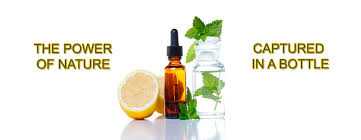
www.ifaroma.org
© ifaroma.
The
International Federation of Aromatherapists
All rights reserved.
Essential oils have many healing properties and work to support other
complementary therapies as well as orthodox healing methods. Aromatic oils
are highly effective in their ability to uplift and restore.
Aromatherapy can be beneficial for a wide range of individuals and problems.
It has been found to be particularly helpful in stress-related symptoms such
as:
-
Skin problems
-
Poor digestion
-
Disturbed sleep
-
Low energy
-
Aches and pains
-
Anxiety
Aromatherapy can help to release physical, mental and
emotional stress (or dis-ease). Acute stress is often accompanied by
hyperventilation which can lead to conditions such as high blood pressure,
diabetes, panic attacks, mood swings, nervousness, anxiety and other
unpleasant symptoms. The deep relaxation that aromatherapy offers regulates
the breathing process, helping the nervous and hormonal systems to return
the body to its ideal state known as “homeostasis”.
www.ifaroma.org
- International Federation of
Aromatherapist
 Prevention
of
ill health and disease
Prevention
of
ill health and disease
 Support
while
in a state of ill health or disease
Support
while
in a state of ill health or disease
 Recovery
from the state of ill health or disease
Recovery
from the state of ill health or disease
 Maintenance
of
optimum health and wellbeing
Maintenance
of
optimum health and wellbeing
Source
www.bcapa.orgg -
The
British Columbia Association of Practicing Aromatherapists
-
Improve blood circulation and lymphatic drainage
-
Improve skin tone
-
Relax and refresh muscles
-
Increase metabolism
-
Assist in pain management
-
Bring about deep relaxation and relieve insomnia
-
Relieve mental and physical fatigue
-
Reduce stress, tension and anxiety
-
Calm the nervous system
-
Promote a sense of relaxation and renewed
energy
takingcharge.csh.umn.edu -
© Regents of the University of Minnesota and Charlson Meadows. All
rights reserved.
What does the
research say? Research studies on essential oils
show
positive effects for a variety of health concerns including infections,
pain, anxiety, depression, tumors, premenstrual syndrome, nausea, and many
others…
Clinical studies are currently underway in Europe, Australia, Japan, India,
the United States, and Canada.
Many of these studies describe the remarkable healing properties of various
oils.
Source
airase.com - Association for the International
Research of Aromatic Science and Education
-
Essential oils are small
enough in molecular size that they can quickly penetrate the tissues of
the skin.
-
Essential oils are lipid-soluble and
are capable of penetrating cell membranes,
even if the membranes have hardened because of an oxygen deficiency.
According to Jean Valnet, MD essential oils can affect every cell of
the body within 20 minutes and are then metabolized like other
nutrients.
-
Essential oils are some of the most powerful
antioxidants as determined by the ORAC test developed at Tufts
University.
-
Essential oils are antibacterial,
antiviral, antifungal, anti-infectious,
antimicrobial, anti-parasitic, and antiseptic.
Some essential oils have been shown to destroy all tested bacteria and
viruses.
-
Essential oils may detoxify the cells and blood in
the body.
-
Essential oils containing sesquiterpenes have
the ability to pass the blood-brain barrier.
-
Essential oils are aromatic,
and when diffused, may provide air purification by increasing ozone and
negative ions in the area eliminating odors from cooking, bacteria,
mold, animals, and other sources, and filling the air with a fresh, aromatic scent.
-
Essential oils promote emotional, physical and
spiritual well-being.
-
Essential oils stimulate blood flow, which
increases oxygen and nutrient delivery.
All of the foregoing facts about essential oils are
based on scientific research.
top
What Are Essential Oils
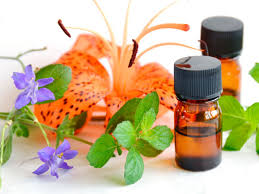
www.naha.org
Copyright © National Association for Holistic Aromatherapy. All rights
reserved.
The
term “essential oil” is a contraction of the original “quintessential oil.”
This stems from the Aristotelian idea that matter is composed of four
elements, namely, fire, air, earth, and water. The fifth element, or
quintessence, was then considered to be spirit or life force. Distillation
and evaporation were thought to be processes of removing the spirit from the
plant and this is also reflected in our language since the term “spirits” is
used to describe distilled alcoholic beverages such as brandy, whiskey, and
eau de vie. The last of these again shows reference to the concept of
removing the life force from the plant. Nowadays, of course, we know that,
far from being spirit, essential oils are physical in nature and composed of
complex mixtures of chemicals.
www.takingcharge.csh.umn.edu
© Regents of the University of Minnesota and Charlson Meadows. All
rights reserved.
An interesting fact -
Essential oils are also used by plants themselves. Naturally occurring
essential oils in plants help with infection control, humidity control,
hormonal effects, wound healing, and attracting or repelling insects, birds,
and animals (Buhner, 2002; Price & Price, 2007).
www.naha.org
-
Copyright © National Association for Holistic
Aromatherapy. All rights reserved.
Essential oils are highly concentrated aromatic extracts
which are distilled from a variety of aromatic plant material including grasses,
leaves, flowers, needles & twigs, peel of fruit, wood and roots.
The International Organization for Standardization (ISO) in
their Vocabulary of Natural Materials (ISO/D1S9235.2) defines an essential oil
as follows: "An essential oil is a product made by distillation with either
water or steam or by mechanical processing of citrus rinds or by dry
distillation of natural materials. Following the distillation, the essential oil
is physically separated from the water phase."
Dr. Brian Lawrence states "For an essential oil to be
a true essential oil, it must be isolated by physical means only. The physical
methods used are distillation (steam, steam/water and water) or expression (also
known as cold pressing, a unique feature for citrus peel oils). There is one
other method of oil isolation specific to a very limited number of essential oil
plants. This is a maceration/distillation. In the process, the plant material is
macerated in warm water to release the enzyme-bound essential oil. Examples of
oils produced by maceration are onion, garlic, wintergreen, bitter almond, etc.
What is NOT an Essential oil is a CO2 extract, a halohydrocarbon extract or an
empyreumatic distillate."
top
How Essential Oils
Are Extracted

To produce essential oils of therapeutic quality – is to retain as much of the original plant essence in its original state as
possible - the most gentle extraction method that will draw the oil
from a particular plant is most desirable. Extraction methods range from Carbon
Dioxide (CO2) extraction - being the most gentle (and most expensive), to
pressing (as for extracting the oil from citrus rinds) and steam distillation,
to solvent extraction. Steam distillation is most common, and as a result of
only requiring heating to just above the boiling point of water, is considered
gentle enough for most essential oils.
Steam and
Hydro Distillation: Steam distillation, the most common method
of essential oil production, involves the flow of steam into a chamber holding
the raw plant material. The steam causes small sacs containing essential oil to
burst. The oil is then carried by the steam out of the chamber and into a
chilled condenser, where the steam once again becomes water. (Hydro-distillation
is a similar process where the plant material is boiled, with the resultant
steam being captured and condensed). The oil and water are then separated; the
water, referred to as a 'hydrosol', can be retained as it will have some of the
plant essence…
Absolutes:
Some plants, and particularly flowers, do not lend themselves to steam
distilling. They are too delicate, or their fragrance and therapeutic essences
cannot be completely released by water alone. These oils will be produced as
'absolutes' – and while not technically considered essential oils they can
still be of therapeutic value. Jasmine
oil and Rose
oil in particular are delicate flowers who's oils are often found in
'absolute' form.
The processing of an absolute first involves the hydrocarbon solvent extraction
of a 'concrete' from the plant material, a semi-solid mixture of typically 50%
wax and 50% volatile oil. The concrete is again processed using ethyl alcohol
(the same alcohol found in beer, wine, etc.) in which the wax is only slightly
soluble. The volatile plant oil separates into the alcohol and this mixture is
removed. The alcohol is then evaporated and the result is an almost pure plant
extract – depending on the care taken in the evaporation process, sometimes 2%
or less of the ethyl alcohol may remain. The use of solvents in the extraction
process notwithstanding, absolutes can have incredibly deep and complex aromas.
CO2's and
SCO2's: The most modern technologies, Carbon Dioxide and
Supercritical Carbon Dioxide extraction. Both methods involve the use of carbon
dioxide as the 'solvent' which carries the essential oil away from the raw plant
material. The lower pressure CO2 extraction involves chilling carbon dioxide to
between 35 and 55 degrees F, and pumping it through the plant material at about
1000 psi. The carbon dioxide in this condition is condensed to a liquid.
Supercritical CO2 extraction (SCO2) involves carbon dioxide heated to 87 degrees
F and pumped through the plant material at around 8,000 psi – under these
conditions, the carbon dioxide is likened to a 'dense fog' or vapor. With
release of the pressure in either process, the carbon dioxide escapes in its
gaseous form, leaving the essential oil behind.
These carbon dioxide methods have a couple of advantages: Like steam
distillation, there are no solvent residues left behind, and the resultant
product is quite pure. Like solvent extraction, there is no heat applied to the
plant material or essential oil to alter it in any way….
Expression / Cold
Pressing: Another popular
extraction method is through pressing. This method was named appropriately - the
oil is basically pressed or squeezed out of the fruit or plant. This also used
to be the method used in the middle ages to extract the essential oils, and used
to be done by hand, which was painstakingly slow, but yielded a very
high-quality oil.
Today this whole
process is automated. The fruit is pierced multiple times with tiny, sharp
points that break the oil pockets. The fruit itself is then squeezed by a
machine, which mixes the fruit juice with the oil. A centrifuge then separates
the juice and the oil, and the oil is collected. The resulting oil is then named
”expressed" oil.
One advantage of
pressing is that the oil is never submitted to high temperatures, and thus does
not lose any flavor. So expressed oils can also be used as flavoring components.
Solvent
Extraction: There are many
variations of solvent extraction, but the basic premise of each one is using a
certain chemical solvent on a (usually) flower or plant. This is a method that
is usually used when the plant material cannot stand up to the heat of steam
distillation and when cold pressing is not an option.
The first step is to
decide what chemical solvent to use and then to mix it with the plant material
for a while. The chemical solvent draws the essential oils out into itself, and
after a while, the plant material is removed from the solvent, leaving behind a
combination of the solvent/wax and oil called concrete. Then, alcohol is applied
to the concrete to dissolve the wax from the solvent. Once the alcohol
evaporates, the oil is left there for collection.
While this method
can often produce larger amounts of oil, it is often criticized because
remainders of the chemical solvents are never completely removed. This means
that solvent-extracted oil has at least a tiny bit of solvent left attached to
it.
Usually this residue
is too small to make a difference, but a few unwise vendors may still use
solvents like benzene, which can leave behind a residue of up to 20% of the
extraction. On the brighter side, benzene is a carcinogenic (cancer-forming), so
the large majority of oil producers will not use it as a solvent. Instead, other
solvents (they all have to be hydrocarbons), like hexane, can be used to produce
cleaner oil without any carcinogenic side effects.
top
History
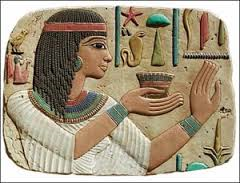
Source www.cancer.gov
Proponents of
aromatherapy report that aromatic or essential oils have been used for thousands
of years as stimulants or sedatives of the nervous system and as treatments for
a wide range of other disorders. [1]
They link it historically to the use of infused oils and unguents in the Bible
and ancient Egypt,[1]
remedies used throughout the Middle Ages and the Renaissance,[2]
and the burning of aromatic plants in various primitive religious rites. The
current applications of aromatherapy did not come about until the early 20th
century when the French chemist and perfumer Rene Gattefosse coined the term
“aromatherapy” and published a book of that name in 1937.[2]
Gattefosse proposed the use of aromatherapy to treat
diseases in virtually every organ system, citing mostly anecdotal and case-based
evidence.[2]
Although Gattefosse and his
colleagues in France, Italy, and Germany studied the effects of aromatherapy for
some 30 years, its use went out of fashion midcentury and was rediscovered by
another Frenchman, a physician, Jean Valnet, in the latter part of the century.
Valnet published his book The Practice of Aromatherapy in 1982,[3]
at which time the practice became more well-known in Britain and the United
States.
Through the 1980s and 1990s, as patients in Western countries became
increasingly interested in
complementary
and alternative medicine (CAM) treatments,
aromatherapy developed a following that continues to this day. In addition
to the growing use of essential oils by
nurses
and aromatherapy practitioners for specific medical issues, the popularity of
aromatherapy has also been exploited by cosmetics companies that have created
lines of essential oil-based (though often with a
synthetic
component) cosmetics and toiletries, claiming to improve mood and well-being in
their users.
Despite the growing popularity of aromatherapy in the latter part
of the 20th century (especially in the United Kingdom), little research on
aromatherapy was available in the English-language medical literature until the
early or mid-1990s. The research that began to appear in the 1990s was most
often conducted by nurses, who tended to be the primary practitioners of
aromatherapy in the United States and United Kingdom (although it is dispensed
by medical doctors in France and Germany). Aromatherapists now publish their own
journal, the International Journal of Essential Oil Therapeutics. Also,
many studies regarding the effects of
odor
on the brain and other systems in animals and healthy humans have been published
in the context of odor psychology and neurobiology (and in the absence of the
specific term aromatherapy).
www.alliance-aromatherapists.org
Copyright © Alliance of International Aromatherapists
Many ancient cultures
recognized the physical and psychological benefits of scented ointments and
oils. Hippocrates, known as the father of modern medicine, maintained 2,500
years ago that “the key to good health rests on having a daily aromatic bath
and scented massage’. Some of the plant materials Discorides wrote about in
his Materia Medica 100 AD include many of the herbs and essential oils we
use today including cardamon, cinnamon, myrrh, basil, fennel, frankincense,
juniper, pine, rose, rosemary, and thyme. Scented ointments and oils were
recognized as having great benefit on both the physical and psychological
level. Bay laurel was used to produce a trance-like state; rose, myrtle and
coriander were respected for their aphrodisiac properties, while myrrh and
marjoram were used as sedatives.
It is well known that aromatic oils were used in
China and India during the same period as ancient Egypt. One of the
principle aspects of ayurvedic medicine is massage with aromatic oils.
Jasmine was used as a general tonic for the entire body. Rose was employed
as an antidepressant and used to strengthen the liver. Chamomile was given
for headaches, dizziness and colds. Many of the properties ascribed to herbs
and aromatic oils by the ancients are regarded as valid today.
The role of micro-organisms in disease was recognized
in the 1880’s and by 1887 French physicians first recorded laboratory tests
on the anti-bacterial properties of essential oils. These early tests
resulted from the observation that there was a low incidence of tuberculosis
in the flower growing districts in southern France. In 1888 a similar paper
was published showing the micro-organisms of glandular and yellow fever were
easily killed by active properties of oregano, Chinese cinnamon, angelica
and geranium.
By the nineteenth century
the role of the medical doctor was well established
and in spite of regular
use of essential oils, the medical professional became firmly fixed on
isolating the active principles of natural substances and producing chemical
drugs based on the identified “active ingredient” of the natural substance.
However, it could be noted that, the French and German medical profession
maintained a close connection with the healing properties of botanicals and
did not experience the schism with botanical medicine as we have experienced
in the United States over the last two hundred years.
In 1910, Rene Gattefosse discovered the healing
properties of lavender after severely burning his hands in a laboratory
explosion. He later used the wound healing and antiseptic properties of
essential oils in the care of soldiers in military hospitals during WWI.
Gattefosse coined the term “aromatherapy” with the 1937 publication of his
book, of the same name. Gattefosse’s book has since been translated into
English as Gattefosse’s Aromatherapy (1993). Dr. Jean Valnet, a French army
surgeon used essential oils in the treatment of war wounds during the French
Indochina War and wrote the book, Practice of Aromatherapy, which was
translated into the English in 1964…read in its entirety…
top
Healing
Oils of the Bible
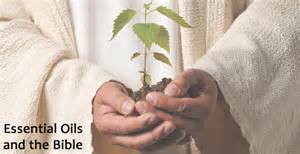
Although the word ‘essential’ oils is not used in
the Bible, however, various oils are specifically named such as
frankincense, myrrh, galbanum, cypress, cedarwood, cassia, hyssop,
sandalwood, rose of Sharon, cinnamon, and spikenard the oil in the ointment
Jesus was anointed with. Mark 6:13, “And they cast out many devils, and
anointed with oil many that were sick, and healed them.”
·
Oils are
referenced in 36 of the 39 books of the Old Testament and 10 of the 27 books
of the New Testament. They are referenced for the anointing of the sick, the
Spirit of God, the Holy Spirit, and as the ingredients for Moses’ holy
anointing oil and incense as provided in Exodus 30:23-24, 34-35.
What is the
Meaning of Anointing? The Hebrew word
for anointing means to smear or consecrate. And the Greek translation means
to rub in.
How Does
True Healing Occur? It wasn’t until the
20th century that physical and spiritual healing was completely separated.
Allopathic medicine does not truly heal. However, it does get us out of
crisis; and masks and relieves the symptoms. Therefore, while it is a
necessary part of modern day society, it is not a cure all. True healing is
obtained when the root or the cause of dis-ease is addressed, inclusive of
both on a physical, mental and spiritual basis.
For complete healing to occur it must be in harmony and in agreement with God.
Rabbinic Sources Say Essential Oils Were
Prescribed for Healing -
As a Jewish rabbi, Jesus would have known how rabbis used oils. Rabbinic
sources from that period prescribe the use of oil in an everyday context for
the treatment of sciatic pains, skin afflictions, headaches, and wounds. And
there are several examples in Jewish literature that prescribed ritual
anointing for exorcism of demons and as part of the process for the healing
and release of the bewitched. Therefore, it is quite plausible that Jesus
used oils in His everyday encounters with those who were sick. And we know
that since He sent His disciples out with clear instructions on anointing,
He must have taught them not only how to anoint but when to anoint and what
part of the body to anoint.
What Oils Were Used for Healing? The next question might be “What kind of oil did He use?” This we do
know-it was not solely with cooking or lamp oil which would have been their
olive oil. The rabbis used healing oils which today we know as therapeutic
essential oils. Oils that would have been readily available, although
expensive, were oils like frankincense, myrrh, cedarwood, spikenard, balsam,
and many more. These oils would have been produced in various ways, all
labor intensive through crude distillation or in some cases, immersing the
plant material in a heavier oil like olive oil until the essence of the
plant oozed out infusing the olive oil with its healing qualities. In this
case, the olive oil would have acted like a “carrier” containing the healing
properties of the essential oil. But these oils likewise would have been
costly. Even more expensive were custom-made blends. A blend referred to in
the Gospels was Nard. Jesus was anointed by a woman in all of the Gospel
stories with a substance referred to as “Nard.” This is actually a blend of
spikenard and myrrh and would have been blended as by the perfumer.
Recommended books for reading:
·
Chemistry of Essential Oils Made Simple: GOD'S LOVE MANIFEST IN MOLECULES
·
Healing Oils of the Bible by David Stewart
www.catholicnewsagency.com - Copyright © CNA All rights reserved
reports,
The Bible is filled with references to oils, spices,
balms and the traders and merchants who sold, bartered, and used them. They
are fascinating and give us a glimpse into the ancient world of medicine.
At their very basic level, these oils are made up of a
unique, natural substance known as a “terpene.” These compounds—whether
monoterpenes or sesquiterpenes—are said to hold powerful healing properties.
Although none of these statements are verified in the current medical
community, the use of these oils throughout history and as recorded in
Scripture makes them worth exploring.
Today’s molecular understanding of monoterpenes and
sesquiterpenes reveal that each is made up carbon atoms and hydrogen atoms.
Mono has ten carbon and sixteen hydrogen while sesqui has fifteen carbon and
twenty-four hydrogen. Respectively they weigh 136 amu and 204 amu (amu is an
atomic mass unit).
These structures are said
to have very specific capabilities and are often seen by the alternative
medical establishment as being able to restore in us “God’s image.” In other
words, they are often considered God’s medicine. This is because
monoterpenes are said to reprogram corrupted cellular information while
sesquiterpenes are said to deprogram and eliminate this bad DNA.
top
The Science
Behind Aromatherapy
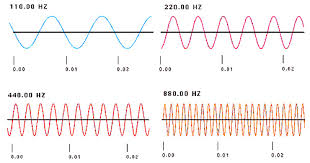
From Healing
Oils of the Bible:
Electromagnetic Frequency
-
There is another dimension to the healing powers of
essentials oils. This has to do with their electrical properties. All
essential oils carry electrical charges, usually electrons or negative ions,
which are healing and healthful. They are also energetic generating
nanovolts of electricity (billionths of a volt) at megahertz frequencies
(that's in the radio frequency range or millions of cycles per second).
These frequencies
are measurable with properly designed instrumentation. Bruce Tainio of
Tainio Technology in Cherry, Washington, has developed sensitive frequency
meters to measure such energies. In a series of experiments conducted by
Tainio, reported in the Reference Guide to Essential Oils published by Abundant Health, the following
was found.
The frequencies of
essential oils are between 52-320 MHz--the highest of all known substances.
The highest is Rose Oil at 320 MHz. Lower frequency oils resonate with the
bodily systems that have those frequencies, such as the bones and joints,
and, thus administer healing vibrations to those systems. When several oils
are blended together, a fundamental frequency will emerge that may be higher
or lower than many of its components.
By comparison, fresh
herbs measure 20-27 MHz, dry herbs 12-22 MHz, and fresh produce 5-10 MHz.
Processed or canned food measured zero. In other words, there is no life or
life force in canned or processed foods. They contain chemical nutrition,
but not the vital, electronic nutrition of live fresh foods.
Measurements on the
human body found that a healthy person has a frequency around 62-68 MHz.
When a person's frequency dips to 58 MHz, cold symptoms can manifest. Flu
symptoms start at 57 MHz, Candida at 55 MHz, and Epstein Barr syndrome at 52
MHz. Cancer can begin when the body falls below 42 MHz. The process of dying
begins at 25 MHz and goes to zero at death.
In other experiments
by Tainio, he measured the effects of coffee, finding that even holding a
cup of coffee lowers one's bodily frequency by 8 MHz and that taking a sip
can lower one's frequency by 14 MHz. When essential oils are inhaled
following the exposure to coffee, the bodily frequencies restore themselves
in less than a minute, but if no oils are administered, it can take up to
three days for the body to recover from even one drink of coffee.
Frequency data are
not yet available on most oils. The table that follows gives a sample of
electromagnetic frequencies for a few oils for which such measurements have
been made and published.
Tainio
also found that the frequencies of oils are also affected by thoughts.
Negative thoughts lowered the frequencies of the oils by 12 MHz while
positive thoughts raised them by 10 MHz. Prayer made an even greater
difference, raising the frequency levels by 15 MHz.
This is important
information. It has always been known that applying and receiving essential
oils in an attitude of prayer greatly enhances their effectiveness. The
above data offer a scientific explanation of why.
The point is that
the Biblical application of essential oils was always with prayer. Sometimes
prayer alone will work and sometimes oils alone will work, but the
combination is very powerful, indeed. The intent and righteousness of the
person applying the oil, as well as the faith of the receiver, has a great
deal to do with the prognosis for success in healing. We must not only be
intelligent and loving practitioners of aromatherapy, we must also live pure
lives so that we may be clear channels for God's healing power. In
Deuteronomy 7:13 Moses comments that God will bless the oil of a righteous
person. Science has now found this to literally be true.
Frequencies
of Essential Oils
Frequencies of the Human Body in Hz -
Georges Lakhovsky discovered that all living cells (plants, people,
bacteria, parasites, etc.) possess attributes which are normally associated
with electronic circuits. Dr. Royal R. Rife found that every disease has a
specific frequency and that certain frequencies can prevent the development
of disease. Professor Harold Saxton Burr showed that these L-Fields could be
used to predict illness by noting variations in them. Dr. Reinhold Voll
identified correlations between disease states and changes in the electrical
resistance of the various acupuncture points. German biophysicist
Fritz-Albert Popp found that diseased cells will radiate a different
photonic signature than healthy cells of the same type. Dr. Robert O. Becker
found the human body has an electrical frequency and that much about a
person’s health can be determined and influenced by it.
Circadian Rhythm
– Body Clock - Our body’s biological functions work much like a finely
tuned watch: Every part works in unison to keep the body in homeostasis
(maintenance of the internal environment within tolerable limits). However,
when one working part doesn’t function normally, it tends to disrupt many
other vital parts and can upset homeostasis. Our circadian rhythm is best
described as an internal biological clock that regulates our body
functions, based on our wake/sleep cycle. Circadian rhythms are not only
important in determining sleep cycles but also in feeding patterns. There
are clear patterns of brain wave activity, hormone production, cell
regeneration, and other biological activities linked to these daily cycles.
Every cell in the body vibrates at a certain frequency
and groups of cells, which form together make bodily systems such as organs,
have their own particular frequency, i.e. a healthy liver has a frequency of
55 to 60Hz.
Overview -
Every object on this planet, still or alive, has an electrical frequency
that can be measured accurately. Electrical frequency is being measured by
counting of the number of occurrences of a repeating current flow per
second. This unit is called Hertz (Hz).
What Does Hertz Mean?
All atoms in the universe have vibrational motion.
Each periodic motion has a frequency, (the number of oscillations per
second), measured in Hertz:
-
1 Hertz (Hz) = 1 oscillation per second (ops)
-
1 Kilo Hertz (KHz) = 1,000 ops
-
1 Mega Hertz (MHz) = 1,000,000 ops or 1 million
-
1 Giga Hertz (GHz) = 1,000,000,000 ops or 1 billion
Some people might ask how
come a living organism like the human being has measurable frequencies. The
definite answer is how is it possible that human beings would NOT radiate in
certain frequencies? The human body is a radiant machine. Every living
element in our body radiates. Our brain operates on electrical current, our
ears absorb sounds vibrations, and we produce voices and temperature.
…It has also been discovered that the general human
healthy frequency is within the range of 62 -72 Hz and when it drops to
lower levels it enables the appearance of variety of diseases. For example
at the level of 58 Hz, diseases like cold and flu were more likely to
appear. On much lower levels (42 Hz) Cancer appeared in many humans.
Any movement of an object in any frequency can be
changed by an external intervention of another frequency and the frequency
of the human body and its cells is of no exception. When the body becomes
ill or infected, these normal frequency patterns become distorted and either
increase in frequency, known as ‘hyper’ in medicine meaning “high, beyond,
excessive, above normal” i.e. inflamed, on fire, irritation type conditions
or decrease in frequency, known as ‘hypo’ in medical terms meaning “low,
under, beneath, down, below normal” i.e. for cold, damp, degenerative
conditions.
Of course the unwanted
virus, toxin or infection also has its own unique frequency which can be
isolated and inverted’ so it is 180° out of phase, then by delivering the
inverted frequencies back to the body, it will neutralize/kill the virus,
toxin or infection allowing the organ to recover and normalize therefore
recovering in health. It was Dr. Royal Rife who first discovered the
importance of frequency.
Frequency &
Health - The human body has a normal frequency range of 62 Hz to 68 Hz,
as the frequency range lowers due to the constant use of alcohol or drugs,
the worse the health condition becomes. When the frequency drops, the immune
system is jeopardized. If it drops to 58 Hz, cold and flu symptoms start
appearing, 55 Hz trigger diseases like Candida and at 52 Hz Epstein Bar
virus, Cancer is at 42 Hz and below, whilst death begins at 20 Hz.
top
How
Do Essential Oils Work
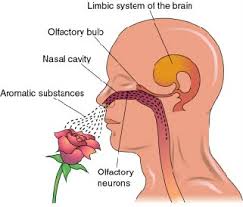
takingcharge.csh.umn.edu
© Regents of the University of Minnesota and Charlson Meadows. All
rights reserved.
Essential oils enter the body in three ways. They can be:
-
Applied to the skin
-
Inhaled
-
Ingested
Essential oils can be
applied topically
to the skin. Common examples include applying a blend that contains black
pepper (Piper
nigrum)
or ginger (Zinziber
officinalis)
essential oil to reduce arthritis pain and improve flexibility, or applying
German Chamomile (Matricaria
recutita)
essential oil to treat eczema.
How does this work? Our skin is somewhat permeable. The active chemicals
in essential oils are absorbed just like the ingredients in common
pharmaceuticals such as hormone replacement therapy cream and nicotine
patches.
Factors That Increase Skin Absorption:
Different factors can affect the absorption of essential oils through the
skin. If you massage the area first, it will increase circulation to that
area, thereby causing an increase in absorption of essential oils. Heat will
likewise increase circulation and thus enhance absorption.
Some researchers report that essential oils may be more readily absorbed
from skin locations with greater concentrations of sweat glands and hair
follicles, such as the genitals, head, soles, palms, and armpits (Battaglia,
2003).
Another way that essential oils enter the body is inhalation
through the nose or mouth. Common examples include inhaling eucalyptus (Eucalyptus
globules, E. radiate, or E. smithii)
essential oil when you have a cough or inhaling peppermint (Mentha
piperita)
essential oil to reduce fatigue or nausea. (Note: Often, essential oils are
put into a diffuser for inhalation.
The Olfactory System:
The olfactory system includes all physical organs or cells relating to, or
contributing to, the sense of smell. When we inhale through the nose,
airborne molecules interact with the olfactory organs and, almost
immediately, the brain. Molecules inhaled through the nose or mouth are also
carried to the lungs and interact with the respiratory system. Thus, inhaled
essential oils can affect the body through several systems and pathways.
Interaction with the Limbic System (Emotional Brain):
During inhalation, odor molecules travel through the nose and affect the
brain through a variety of receptor sites, one of which is the limbic
system, which is commonly referred to as the "emotional brain."
The limbic system is directly connected to those parts of the brain that
control heart rate, blood pressure, breathing, memory, stress levels, and
hormone balance (Higley & Higley, 1998). This relationship helps explain why
smells often trigger emotions. Knowing this, we can hypothesize how
inhalation of essential oils can have some very profound physiological and
psychological effects!
The third way that essential oils enter the body is by ingestion
(swallowing). Oral ingestion of essential oils is NOT recommended for the
general public because a great deal of essential oils knowledge and
expertise is necessary for safe practice.
The ingestion
of essential
oils is not common practice in the US. In France, it is more common, but
only when specially trained physicians and pharmacists prescribe and
dispense them. There are several reasons for caution, including the
following:
top
The
Way Essential Oils Affect the Physical Body
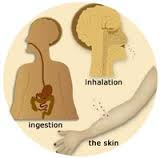
Source
www.cancer.gov
Many studies of essential oils have found that they have antibacterial effects
when applied to the skin. Some essential oils have antiviral activity
against the herpes
simplex virus. Others have
antifungal activity against certain
vaginal and
oropharyngeal fungal infections.
In addition, studies in rats have shown that different essential oils can be
calming or energizing. When rats were exposed to certain fragrances under stressful conditions,
their behavior and immune
responses were improved.
One study showed that after
essential oils were inhaled, markers of the fragrance compounds
were found in the bloodstream, suggesting that aromatherapy affects the body
directly like a
drug, in addition to indirectly through the central
nervous system.
www.alliance-aromatherapists.org
Copyright © Alliance of International Aromatherapists
Effects of
essential oils by inhalation:
The inhalation of aromatic
molecules affect us on a variety of levels – physical, emotional and
spiritual. When inhaled, aromatic molecules enter the nasal passages where
they stimulate olfactory receptor sites and trigger nerve messages to the
limbic center brain. The limbic area of the brain, also called the old
brain, or rhinocephalon, it is thought to have evolved more than 70 million
years ago and predates the neocortex. It represents a complex area with 34
structures and 53 pathways that in turn stimulates physiological responses
within the body via the nervous, endocrine or immune systems, affecting
sensations of pleasure, pain centers of the brain, emotions, memory, sleep,
appetite and sex.
There are many ways to use essential oils for
inhalation including electric micro-mist diffusers, heat generated diffusion
(candle diffuser, light bulb ring, Aromaball), spritzing, steaming and the
favorite aromatic bath, which is also wonderful for the skin.
The effects of stress in daily life, often seen as
depression, anxiety and irritability, is an area of care in which
aromatherapy enjoys a great deal of success, especially in combination with
massage.
Effects of
essential oils by
topical
applications: When used topically (on the skin), in a
suitable dilution, essential oils have a myriad applications for health,
beauty and well being. Besides being used in massage and for skin care, they
are easily applied as first aid remedies.
For example, the anti-inflammatory properties of Helichrysum
and German Chamomile make them useful for pain due to local inflammation.The anti-bacterial and anti-viral properties of Tea
Tree, Eucalyptus globulus and Cajeput are helpful for flu and sinusitis
prevention and general strengthening of the immune system. Essential oils can be
added to many personal care products and integrated into home maintenance
chores to enhance the overall environment.
top
Essential
Oils Therapeutic Properties
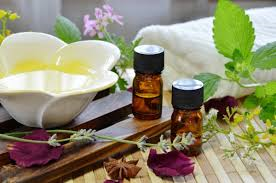
Each essential oil has
its own chemical identity, which produces unique properties. Essential oils
can be antiseptic, analgesic, anti-inflammatory, anti-infectious and so on.
They can be used to stimulate or sedate, and their powers to heal can be
applied to physical, mental and
emotional
conditions. The following is a list of essential oil's therapeutic
properties.
Alterative: Tending
to restore normal health; cleans and purifies the blood...
Analgesic: Numbs pain.
Antibacterial: Destructive to bacteria.
Antifungal: Inhibits growth of fungus.
Anti-infectious: Helps the body strengthen its
own resistance to infective organisms…
Anti-inflammatory:
Alleviates inflammation.
Antipyretic: Dispels heat, fire and fever
(from the Greek word pyre, meaning fire).
Antiseptic: Assists in fighting
germs/infections.
Antispasmodic: Relieves spasms of
voluntary and involuntary muscles.
Antirheumatic: Prevents and/or relieves
rheumatic pain and swelling.
Antiviral: Inhibits growth of viruses.
Astringent: Firms tissue and organs; reduces
discharges and secretions.
Carminative: Relieves intestinal gas pain and
distention; promotes peristalsis.
Cephalic: Remedy for the head, generally
clearing and stimulating.
Cicatrisant: Cell-regenerative for skin,
healing for scars.
Decongestant: Reduces nasal mucus production
and swelling.
Diaphoretic: Causes perspiration and increased
elimination through the skin.
Diuretic: Promotes activity of kidney and
bladder and increases urination.
Emetic: Induces vomiting.
Emmenagogue: Helps promote and regulate
menstruation.
Emollient: Smoothes softens and protects the
skin.
Expectorant: Promotes discharge of phlegm and
mucous from the lungs and throat.
Haemostatic: Stops the flow of blood.
Astringent that stops internal bleeding or hemorrhaging.
Hypotensive: Lowers high blood pressure.
Immune stimulant: Stimulates functioning of
the immune system.
Laxative: Promotes bowel movements.
Mucolytic: Breaks down mucus (pulmonary).
Nervine:
Strengthens the functional activity of the nervous system; stimulant
or sedative.
Rubifacient: Increases local blood
circulation, vasodilation and local analgesic effect.
Sedative:
Calms and tranquilizes by lowering the functional activity of the
organ or body part.
Stimulant:
Increases functional activity of specific organ or system.
Stomachic: Increases functional activity of
specific organ or system.
Tonic:
Strengthens and restores vitality.
Sudorific: Increases sweating.
Vasodilator: Helps to dilate blood vessels.
ANTISEPTIC:
All essential oils are to a greater or lesser extent ANTISEPTIC. This is one of
their most important and valuable properties. This broad description of
ANTISEPSIS includes anti viral, antifungal, anti-bacterial
and general anti-microbial activity. However,
the most outstanding property possessed by essential
oils is their
antiseptic/antigenetic property.
It is
critical to your full understanding and appreciation of Essential Oil Therapy
that you appreciate the ways in which essential oils can have both a healing and
preventive role in diseases involving invasion of the body by microbes.
airase.com - Association for the International Research of Aromatic Science
and Education
To find complete listing of therapeutic uses of essential oils
Click Here
top
Essential Oils and
Pharmaceuticals Compared
According to The Journal of the American
Medical Association (JAMA),
“over
100,000 Americans die each year from prescription drugs.”
Source -
healthimpactnews.com
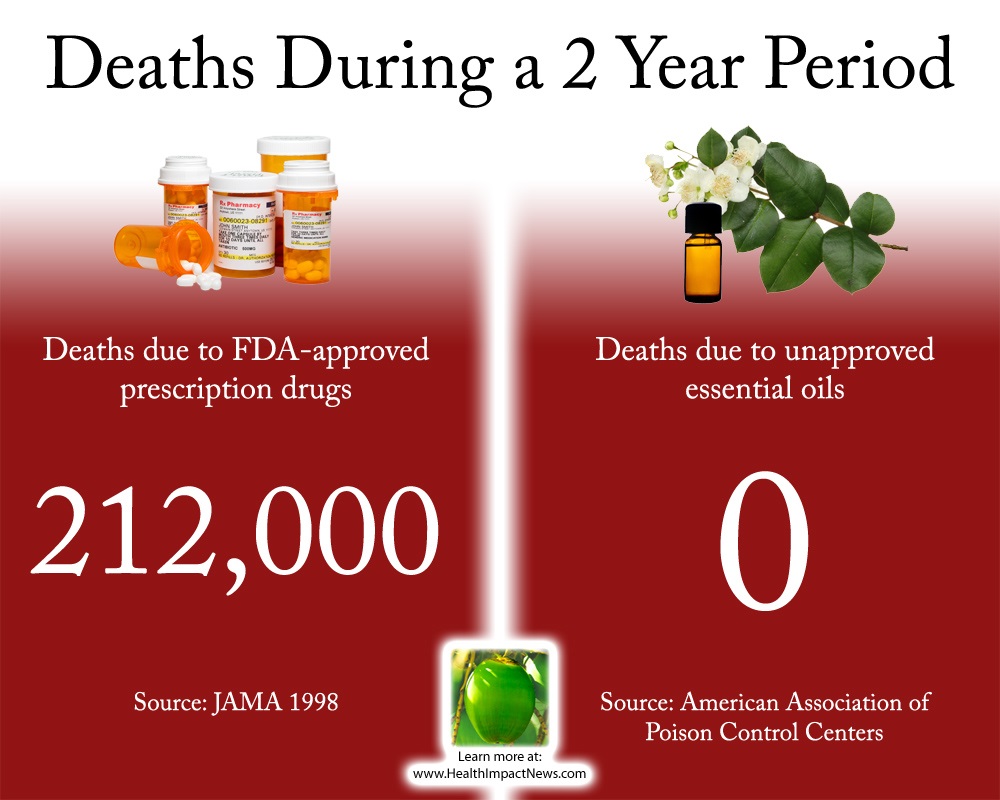

top
Practitioner
Treatment
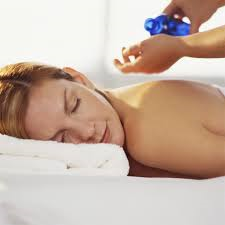
www.alliance-aromatherapists.org Copyright
© Alliance of International Aromatherapists.
A qualified aromatherapist is one who has completed a
recognized training in aromatherapy at the minimum level of 200 educational
contact hours (such as approved by the National Association of Holistic
Aromatherapy or the Alliance of International Aromatherapists) or has been
recognized through a standardized exam, such as provided by the Aromatherapy
Registration Council.
Reference -
umm.edu
Different aromatherapy practitioners may have different recipes
for treating specific illnesses, involving various combinations of oils and
methods of application. Differences seem to be practitioner-dependent, with some
common uses more accepted throughout the aromatherapy community.
Training in aromatherapy is available at several schools throughout the
United States and United Kingdom; but there is no professional standardization,
and no license is required to practice in either country. Thus, there is not a
great deal of consistency in the specific treatments for specific illnesses
among practitioners. This lack of standardization has led to poor consistency in
research on the effects of aromatherapy: because anecdotal evidence alone or
previous experience drives the choice of oils, different researchers often
choose different oils when studying the same applications.
What happens during an aromatherapy session?
Professional aromatherapists, nurses, physical
therapists, pharmacists, and massage therapists can provide topical or
inhaled aromatherapy treatment. Only specially trained professionals can
provide treatment that involves taking essential oils by mouth.
At an aromatherapy session, the practitioner will ask
about your medical history and symptoms, as well any scents you may like.
You may be directed to breathe in essential oils directly from a piece of
cloth or indirectly through steam inhalations, vaporizers, or sprays. The
practitioner may also apply diluted essential oils to your skin during a
massage. In most cases, the practitioner will tell you how to use
aromatherapy at home, by mixing essential oils into your bath, for example.
www.ifaroma.org - The International Federation of Aromatherapists ©
2014 ifaroma. All rights reserved.
Consultation
- Before any treatment takes place your therapist will conduct a
comprehensive and entirely confidential consultation. During this
consultation, you will be asked to give details of your medical history,
current ailments or prescribed treatment if any, and any personal stress
factors which may have affected your general well being. This information is
important to your therapist because each treatment is highly individual.
Your physical, mental and emotional states have to be
taken into account so that a treatment plan can be adapted to suit your
particular needs. Consideration will be given to your lifestyle and diet.
Any history of health problems including allergies and emotional issues will
be taken into account as will environmental and social factors. If you are
currently receiving treatment for a serious illness or if there are concerns
about your current state of health, you will be advised to consult your
doctor before embarking on a course of aromatherapy treatments. Following
your consultation, you may be given feedback and advice on how to improve
the quality of your health.
Treatment
- If appropriate, you will be given a full or partial body massage with
essential oils diluted in a vegetable carrier oil. A classic full body
aromatherapy massage routine begins with the back, arms, shoulders and neck,
followed by the backs of the legs and the feet…
Your therapist may decide to limit the application of
essential oils through massage to limited areas of your body. They might
choose to apply the oils to your skin via compresses. They may feel you
should simply inhale an oil or a blend of oils to help your current
condition. An example would be a client in a state of profound shock or
grief. The therapist may decide the most effective treatment would be the
inhalation of Frankincense oil, combined with a very gentle, soothing
massage of the head, hands and feet.
Aftercare Plan
- Your therapist may give you samples of the same blend(s) used in your
treatment to use at home. They may prescribe the use of essential oils for
inhalation or for baths/footbaths at home. They may suggest you contact
other practitioners (orthodox and complementary) for more specific help.
top
Find an Aromatherapist
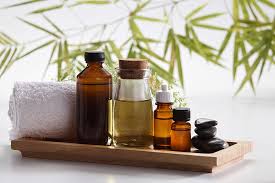
www.takingcharge.csh.umn.edu © Regents of the University of
Minnesota and Charlson Meadows. All rights reserved.
As with any other kind of service provider, the best
way to find a good aromatherapist is through referrals from your healthcare
providers, family, colleagues, and friends.
When choosing a practitioner, it is important to
consider their education and training, experience, and philosophy of care.
Lists of aromatherapists are also available online:
The Aromatherapy Registration Council maintains a public database of Registered
Aromatherapists -
aromatherapycouncil.org
Find an Aromatherapist is a listing of AIA members who have chosen to
advertise their services on our web site -
www.alliance-aromatherapists.org
www.ifaroma.org - Our practitioners are
known worldwide as being trained to the best standard and hold the highest
qualification in aromatherapy. Be assured that all our members listed have
not only met but exceed the National Qualification Framework (NQF)
equivalent to Level 4/5 in terms of quality and standard and meet the
National Occupational Standards (NOS); a true professional in their field.
Members of the IFA have pioneered the use of
Aromatherapy in NHS hospitals, hospices and the Aromatherapy-In-Care Scheme
alongside spa's, salons and in general practice. Not all our therapists wish
to be contacted directly by the public so if you cannot find a particular
therapist please contact us. We currently have members all over the world
and expanding rapidly.
To locate a qualified aromatherapist in your area, contact the National
Association of Holistic Therapy at www.naha.org
Live Healthy Naturally
Recommendations -
If you cannot find a practitioner through the
above databases, try the following:
-
Make calls to local massage therapist. Often, they
will know about or have an on-premises aromatherapy practitioner.
-
Check natural, herbal or alternative medicine stores
in your area, pay a visit or call them to ask if they know of any
aromatherapy practitioners in the area.
-
Check on-line websites. Do a search on the web by
including the term “aromatherapist” with your city and state.
*Most major hospitals now provide aromatherapy
services through their “integrative or holistic” departments.
. –
Live Healthy Naturally
top
Finding a Qualified
Aromatherapy Practitioner
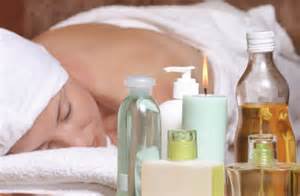
www.takingcharge.csh.umn.edu © Regents of the University of
Minnesota and Charlson Meadows. All rights reserved.
Are
aromatherapists licensed? There is no licensure for aromatherapists in
the US. Guidelines for practice are often included in general aromatherapy
courses, but these are not monitored or enforced by any regulatory body at
this time.
An aromatherapist may or may not be a licensed healthcare provider.
Healthcare licensure (for example, MD, RN, or DC) at this time does not
indicate any particular knowledge level about essential oils. The practice
codes for these professions, however, dictate that these individuals should
be able to demonstrate additional training and competence in modalities not
normally part of their profession before including these skills (like
aromatherapy or acupuncture)
in their practice. A lay person practicing as an
aromatherapist is not licensed in the U.S., but may have more training and
experience in the use of essential oils than a healthcare provider. For
these reasons, it is important to ask a
prospective aromatherapy provider about their training and experience.
See Questions to Ask
Are aromatherapists certified?
There is no national aromatherapy certification. However some groups offer
their own certification programs. The National
Association for Holistic Aromatherapy (NAHA) is an educational,
nonprofit organization that has established education guidelines for
aromatherapy training programs. NAHA guidelines require 200 hours of
training, including anatomy and physiology. Their website lists two
Standards of Training levels. Level One consists of 30 hours of Aromatherapy
Foundations. Level Two consists of approved standards for professional
Aromatherapy certification.
The NAHA
website lists aromatherapy schools that comply with their current
educational guidelines and have applied for inclusion in their website.
Consumers also can find books and other information approved by NAHA on this
site.
Another private company owned by an RN who has
practiced and taught aromatherapy for many years offers an aromatherapy
certification program for nurses. Visit www.rjbuckle.com.
The Aromatherapy
Registration Council (ARC) offers registration to individuals who have
demonstrated core knowledge of aromatherapy and essential oil safety by
passing a national examination. Registration serves as a form of
self-regulation for the aromatherapy profession, although many experienced
and competent aromatherapists have not taken the step of obtaining
registration. A person who has taken and passed the national exam may place
the initials RATM (Registered Aromatherapist) after their name along with
their other credentials. You can find a registered aromatherapist in your
area at the ARC website.
LIVE HEALTHY NATURALLY’S RECOMMENDATIONS
You are your best advocate. And since
aromatherapy practitioner services are not yet a mandated licensed service,
it would behoove you to be knowledgeable or at the very least have credible
resources to research your recommended treatment of care.
The practice of aromatherapy does not
only include massage, but it is also includes the application of using
essential oils in conjunction with the massage, inhalation, salves, etc.
Essential oils have powerful medicinal properties. Therefore, it is
important that the practitioner have the expertise of treating conditions
with appropriate essential oil applications.
For example, if the practitioner
recommends essential oil that is primarily used for arthritis and your
aliment is asthma, then it is apparent that the prescription does not match
the condition. Although, you should be mindful that certain essential oils
can and are utilized for multiple applications. This too, however, would be
documented as a therapeutic property. It does not hurt to cross-check.
top
Questions to Ask About Treatment

www.betterhealth.vic.gov.au
Be clear on your complementary therapy goals.
Think about what you expect to gain from treatment before you start a
complementary therapy. Your doctor can help you to form realistic
expectations. For example, you may hope to:
During your
first visit. Issues to consider during your first visit with a therapist
may include:
-
Accessibility – for example, if the clinic has
sufficient parking and is close to home or public transport
-
First impressions – for example, the building and
grounds are well kept and the waiting room and treatment areas are
hygienic
-
Level of professionalism – when you tell the
receptionist that you are a new client, are you given written
information about the practice? Are you asked for a detailed health
history or is your medical history ignored or not enquired about? Are
you kept waiting for a long time?
-
Qualifications – check the therapist’s level of
qualification. Find out if they are a member of a professional
organisation and if that organisation has a code of ethics. Membership
may be voluntary, but it suggests there is a commitment to maintaining
appropriate standards of practice.
-
Personal manner – your rapport with the therapist
is important. Do you feel relaxed and welcome? Does the therapist listen
to you? Are you comfortable with the thought of seeing this person on a
regular basis?
-
*
Are they insured for malpractice as well as standard business liability?
Ask the aromatherapist if he/she is
insured to practice aromatherapy (a form of malpractice insurance, not
just general slip/fall liability insurance). Insurance carriers that
supply this form of insurance to aromatherapy practitioners generally
require the insured to have successfully completed particular
aromatherapy training from established schools. If a practitioner
doesn’t have coverage, it not only means that you do not have financial
recourse in the case of negligence, but it can also tip you off that
this person may not be properly trained or doesn’t realize the serious
implications that can arise from unsafe essential oil use.
During the
initial consultation, the therapist will recommend treatment. Questions you
may wish to ask could include:
-
How does the treatment work?
-
Is there any proof that the treatment works?
-
Will it interfere with any type of conventional
medical treatment, such as prescription medicines?
-
What side effects can I expect?
-
How long will I need the treatment?
-
What are the costs?
*Live
Healthy Naturally added notation.
top
Essential Oils In Cancer Treatment
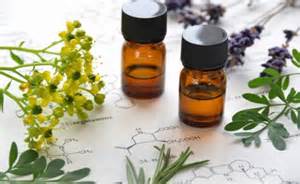
Link to
Therapeutic Cancer Treatment with Essential Oils
Reference -
www.hindawi.com
- Journals
Essential oils are complex mixtures of several
components endowed with a wide range of biological activities, including
antiseptic, anti-inflammatory, spasmolytic, sedative, analgesic, and
anesthetic properties. A growing body of scientific reports has recently
focused on the potential of essential oils as anticancer treatment in the
attempt to overcome the development of multidrug resistance and important
side effects associated with the antitumor drugs currently used. In this
review we discuss the literature on the effects of essential oils in in
vitro and in vivo models of cancer, focusing on the studies performed with
the whole phytocomplex rather than single constituents.
Current therapeutic approaches to cancer are often
associated with the development of multidrug resistance, important side
effects, and high cost, underscoring the unmet need for more efficacious and
less toxic interventions. The vegetal kingdom has always represented an
attractive source for therapeutics and several examples do exist for natural
products being included in current protocols to tackle the limits of
chemotherapy. Accordingly, vincristine, vinblastine, colchicine, taxol,
paclitaxel, and others are plant-derived anticancer drugs currently used in
clinic [1–3].
Among phytochemicals, essential oils have been
considered attractive for their wide variety of bioactivities. Anticancer
potential of essential oils has been explored and several studies are now
available in the literature. A MEDLINE survey on PubMed for “essential oil
and cancer” (November 2014) retrieves 686 results with a remarkable surge in
publications over the last 15 years (459 out of 686 studies), while a search
for “essential oil and cytotoxicity” reports only 270 results, with 234
published in the last 10 years. These numbers suggest that the studies in
this field have been initiated rather lately despite the fact that essential
oils have been known since ancient times. The reported studies can be
divided into in vivo and in vitro and are related to essential oils from a
wide variety of plants or, mainly, their constituents.
Read in entirety.
Reference -
www.cancer.gov
This complementary
and alternative medicine (CAM) information summary provides an
overview of the use of aromatherapy and essential oils primarily to improve the
quality of life of cancer patients. This summary includes a brief history of
aromatherapy, a review of laboratory studies and clinical
trials, and possible adverse
effects associated with aromatherapy use.
This summary contains the following key information:
-
Aromatherapy is used with other complementary
treatments (e.g., massage and
acupuncture) as well as standard treatment.
-
Aromatherapy is not widely administered via
ingestion.
-
The effects of aromatherapy are theorized to result
from the effect of
odorant
molecules from essential oils on the brain’s emotional center, the
limbic system. Topical application of aromatic oils may exert
antibacterial, anti-inflammatory, and
analgesic effects.
-
Studies in animals show
sedative and
stimulant effects of specific essential oils as well as positive
effects on behavior and the immune system.
Functional imaging studies in humans support the influence of odors
on the limbic system and its emotional pathways.
-
Human clinical trials have investigated
aromatherapy primarily in the treatment of stress and anxiety in
patients with critical illnesses or in other hospitalized patients.
Several clinical trials involving patients with cancer have been
published.
-
Aromatherapy has a relatively low toxicity profile
when administered by inhalation or diluted topical application.
-
Aromatherapy products do not need approval by the
U.S. Food and Drug Administration because there is no claim for
treatment of specific diseases.
top
Methods of Using Essential Oils
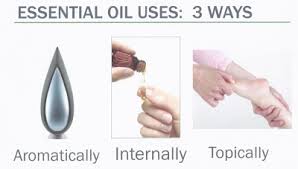
Topical
Application:
Perhaps
even more common than inhalation, topical application is the preferred method of
use for many essential oils. However, MOST essential oils require significant
dilution as they can cause skin irritation. Lavender
Oil and Chamomile
Oil are two essential oils that can be applied 'neat' or without
dilution; others, such as Cinnamon
Oil and Oregano
Oil should not be applied topically in most cases - they may be
applied once highly diluted to the bottoms of the feet. A VERY small amount
should be tested first.
…Essential oils tend to pass through the skin fairly readily, as they are
lipotropic (fat soluble) and their molecular structure is fairly small.
Essential oils can pass into the bloodstream and surrounding tissues. In this
manner, their possible effects can be targeted - if one has digestive trouble,
rubbing Peppermint
Oil diluted in a carrier
oil (a pure vegetable or nut oil) into the abdomen may help. In the
same way, rubbing Chamomile
Oil or Lavender
Oil into the solar plexus (bottom tip of the sternum) may help
relieve tension.
Topical application is the preferred method of use for many essential
oils. Essential Oils should be
diluted in carrier oil prior to topical application to the range of 1% to 3%.
Carrier oils are nutrient-rich vegetable oils pressed from seeds and nuts that
essential oils are added to in order to use them on the skin. A
carrier-oil (or base oil) is used such as Almond oil or Lavender oil.
Essential oils can
also be added to soaps, lotions, and other body care products depending on the
therapeutic properties and the desired effect.
Inhalation:
Most essential oils can be used undiluted in a diffuser
or oil lamp (sometimes called a 'burner') safely. A diffuser passes a
continuous stream of air over your oil source - often simply straight from the
bottle - creating a fine evaporated mist without heating. A candle lamp
incorporates a small bowl over a tea candle. The bowl is first filled with a
small amount of water, into which a few drops of essential oils are placed. The
oils are evaporated through the gentle heating of the water by the candle.
Inhalation is often effective for mood-altering effects of
essential oils, for example, rosemary for mental stimulation, lavender for
relaxation, etc. This is the direct effect of essential oil components on the
limbic system generally known as aromatherapy.
Ingestion:
Finally, some essential oils are ingested, usually either in water or in
capsules. As this technique is rare, and not really considered effective in most cases, we
strongly suggest one refrains from trying it unless noted specifically for that
oil by a knowledgeable source.
aromaticscience.com
The French Model promotes taking essential oils
internally and was advocated by several prominent aromatherapists, including
Jean Valnet, Paul Belaiche, and Henri Viaud. Essential oils can have great
effect when used internally. The French Model is highly successful in the
treatment of infectious and degenerative illnesses. When used with caution,
internal use can promote healing, longevity, and can safely relieve many
ailments.
The confusion surrounding the internal use of essential oils is largely
based on a lack of knowledge. Even though ample literature supporting the
internal use of essential oils exists, most aromatherapy training programs
do not teach this mode. Many aromatherapy programs adhere to the belief that
ingestion of all essential oils is toxic, which is simply not true, as
supported by the US Food and Drug Administration’s GRAS (Generally
Recognized As Safe) list. Toxic reactions are the result of taking
contaminated oils or taking excessive doses.
Many essential oils are approved for internal use by
the US Food and Drug Administration’s GRAS list.
Reference -
www.naha.org
-
Copyright © National Association for Holistic
Aromatherapy. All rights reserved
Massage/Body Oil -
Facial Creams, Lotions and Oils: You
can purchase unscented facial creams or body lotions to add essential oils
to or create a facial oil by using a variety of vegetable/herbal oils and
then adding essential oils into the mix. Or learn how to make your own
creams and lotions! In general, aromatherapy facial oils and creams are
utilized to:
-
Enhance wound healing
-
Influence and slow aging of skin
-
Scar reduction and improve appearance
-
Support and enhance immune cells of the skin
-
Balance sebum production
-
Aid the process of detoxification in the skin
-
Increase local circulation
-
Improve tone of skin
-
Encourage hydration of the skin, when used in
conjunction with hydrosol/water or cream.
-
Soften and soothe the skin
-
Address emotional issues
In general, aromatherapy full-body baths are useful
to:
-
Reduce stress/anxiety
-
Alleviate muscular aches, pains, and tension
-
Soothe mental or physical fatigue
-
Stimulate circulation
-
Enhance lymph circulation
-
Reduce pain and stiffness
-
Increase local circulation
-
Improve tone and health of skin
-
Aid detoxification
Steam inhalation: Place
3-7 drops of essential oil into boiling water. Some essential oils to
consider include: Eucalyptus sp. (either E. globulus or E. radiata), Thyme
ct. linalol (Thymus vulgaris), Lemon (Citrus limon), and Tea tree (Melaleuca
alternifolia). Cover
head with towel and breathe through the nose. Keep eyes closed! Steam
inhalations are indicated for:
-
Congestion in upper respiratory tract (cold or
flu)
-
Sinus infection or sinusitis
-
Enhancing respiratory function
Aromatic Spritzers: An aromatic spritzer is a combination of
essential oils and water. Often a dispersant such as solubol is used to
diffuse the essential oils within the water. Aromatic spritzers can be used
as room fresheners, to cleanse the air, to uplift and energize, to scent
space, or used during a massage or esthetic practice: e.g. sprayed on face
cradles to keep respiratory passages clear. To make: Add 10-15 drops of
essential oil (1-3 different essential oils) per ounce of water. Shake
before using or add dispersing agent.
In general, aromatic spritzers are useful for:
-
Room and air freshener
-
Body sprays over which an aromatic blend will be
applied
-
Reducing undesirable odors in the air
-
Enhancing breathing
-
Soothing a variety of emotional states
Diffusion: Depending on diffuser type, use as
directed. Aerial dispersion via electric diffusor can be used for:
-
Environmental ambiance
-
Stress/anxiety reduction
-
Insomnia or sleep disorders
-
Mood or motivation enhancement
-
Increase alertness
-
Purify and improve air quality
-
Reduce airborne pathogens
Different types of inhalation: Direct inhalation
refers to the technique of sniffing or inhaling an essential oil directly
from a bottle, a handkerchief or a cotton-ball. Direct inhalations are most
commonly employed for the relief of emotional distress and as supportive
therapy for the relief of respiratory congestion or other respiratory
ailments. Direct inhalations are also used for their effect on the nervous
system.
Direct palm inhalation refers to the technique of sniffing or inhaling an
essential oil/s or synergy directly from the palms of your hands. Direct
palm inhalations are most commonly utilized for the relief of emotional
distress, to uplift and transform ones consciousness, or simply to relax and
breathe. It can be used as supportive therapy for the relief of respiratory
congestion or other respiratory ailments.
Direct from bottle: Create a synergy (undiluted
essential oils) utilizing 3-5 essential oils and place in a small bottle.
Have client waft bottle under nose while taking deep inhalations. This can
be done 3-4x a day or as needed.
Smelling salts: Create a synergy with a total of
20-30 drops utilizing 3-5 essential oils and place in a 10ml (1/3 ounce)
bottle. Once the synergy is in the bottle, fill the remainder of the bottle
with either fine or coarse sea salts. Have client waft bottle under nose
while taking deep inhalations. This can be done 3-4x a day or as needed.
Handkerchief/Cotton-ball: Place 2-4 drops
of essential oil or synergy on the tissue or cloth. Hold cloth in the palms
of your hand and take 2-3 deep inhalations through the nose. If using a
cotton ball, gently waft the cotton ball under the clients’ nose. This
technique can be used 2-3x a day or as needed.
Inhaler tubes: Inhaler
tubes are designed using 100% essential oil/s saturated on a cotton pad.
**NOTE: Please be sure to use organic cotton pads. You can purchase these at
a local health food store and cut the desired size to fit tube. Cotton is
considered a ‘dirty’ crop, meaning it is heavily sprayed with pesticides. It
is recommended to replace the cotton pad that comes in the tube with a
certified organic cotton pad.
To make: Choose
2-3 essential oils to work with based upon a specific purpose. Decide how
many drops of each essential oil so it adds up to 15 to 25 drops.
Place drops of each essential oil in a small glass bowl/cup then place pad
from inhaler into the bowl to absorb the essential oils. Use tweezers to
move pad around a bit and then remove pad with tweezers and place in inhaler
tube. Close inhaler tub and it is ready for use.
In general, Inhaler tubes or
smelling salts are useful for:
top
Formulas
for Use 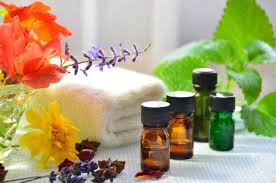
Source
penny-price.com
- Penny Price Academy
Blending
The word synergy comes from
two Greek words: ergo meaning work and syn meaning together.
Aromatherapy essential oils are synergistic both within themselves and with
each other. In each essential oil there are many different chemicals,
which all work together to produce a whole range of integrated effects.
When two or three aromatherapy essential oils are mixed together, there will
be a stronger effect than the sum of the effects of the individual oils. See
below for blending guidelines:
Massage
Lotions, oils and creams
-
3 drops of aromatherapy essential oil to every 10ml
of carrier oil, lotion or body cream. This multiplies up to 15 drops of
essential oil to 50ml carrier oil, lotion or cream.
-
When preparing a blend for children 2-12 years of
age, older people, and delicate, post-operative or chronically sick
individuals, half the amount of oil.
-
For babies less than 2 years of age, use 4 drops of
essential oil to 50ml carrier. When blending, start with two and develop
to a maximum of four different aromatherapy essential oils.
Inhalation
-
From hot water: 1-2 drops of essential oil
-
From a tissue: 4-6 drops of essential oil
-
Vaporiser/diffuser: 4-6 drops of essential oil
Bath
For a hand/foot bath use 4 drops of aromatherapy
essential oil in a suitable carrier (as above) and use a small basin,
footbath or foot-spa.
Compress
TO EVERY 10ML OF CARRIER YOU USUALLY NEED 3 DROPS OF
ESSENTIAL OIL
top
Safety Issues
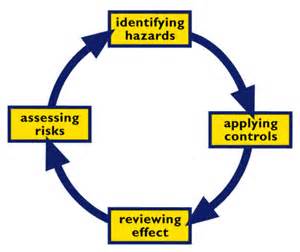
www.ifaroma.org
- International Federation of Aromatherapists -
© ifaroma.
All rights reserved
Please remember to use essential oils carefully and safely. Do not take
essential oils internally. Do not use undiluted essential oils on the skin
(except where indicated). Keep out of reach of children and pets. Keep away from
eyes. Some people may have an allergic reaction to essential oils. Extra
precautions should be taken when using essentially oils during pregnancy and on
children. Always seek professional advice if unsure.
Essential oils are highly concentrated and should not
be used in an undiluted form for safety reasons, unless under the
supervision of a qualified practitioner. Oils are usually diluted in
vegetable carrier oils or water. All reputable essential oils are sold with
comprehensive instructions for use, and these instructions should be
followed at all times. Some oils are not suitable for use with certain
medical conditions, and most oils are not used during pregnancy, or with
very young children. All essential oils should be kept in bottles with
dropper lids and tightly closed caps, and kept out of reach of children and
pets.
Please note that the
IFA does not recommend or endorse the ingestion or internal use of essential
oils.
www.naha.org
-
National Association for
Holistic Aromatherapy
General safety precautions
-
Keep all essential oils out of reach of children and pets.
-
Do not use or recommend the use of photosensitizing essential oils prior
to going into a sun tanning booth or the sun. Recommend that the client
stay out of the sun or sun tanning booth for at least twenty-four hours
after treatment if photosensitizing essential oils were applied to the
skin.
-
Avoid prolonged use of the same essential oils.
-
Avoid the use of essential oils you know nothing about on your clients.
-
Research and get to know the oil prior to using it on others.
-
Avoid the use of undiluted essential oils on the skin, unless otherwise
indicated.
If you suspect your client may be
sensitive to specific essential oils or if your client has known
allergies or sensitivities, it may be wise to perform a skin patch test.
-
Know the safety data on each essential oil and place into context of use
and knowledge.
-
Use caution when treating a female client who suspects she is pregnant
or has been trying to become pregnant.
-
Keep essential oils away from the eyes.
-
Essential oils are highly flammable substances and should be kept away
from direct contact with flames, such as candles, fire, matches,
cigarettes, and gas cookers.17
-
Make sure your treatment room has good ventilation.
-
Do not use essential oils
internally
unless trained to do so.
www.encyclopedia.com
Precautions
-
Individuals should only take essential oils
internally under the guidance and close supervision of a health care
professional. Some oils, such as eucalyptus, wormwood,
and sage, should never be taken internally. Many essential oils are
highly toxic and should not be used at all in aromatherapy. These
include (but are not limited to) bitter almond, pennyroyal,
mustard, sassafras , rue,
and mugwort .
-
Citrus-based essential oils, including bitter and
sweet orange, lime, lemon, grapefruit, and tangerine, are phototoxic,
and exposure to direct sunlight should be avoided for at least four
hours after their application.
-
Other essential oils, such as cinnamon leaf, black
pepper, juniper, lemon, white
camphor, eucalyptus blue gum, ginger, peppermint, pine needle, and thyme
can be extremely irritating to the skin if applied in high enough
concentration or without a carrier oil or lotion. Caution should always
be exercised when applying essential oils topically. Individuals should
never apply undiluted essential oils to the skin unless directed to do
so by a trained healthcare professional and/or aromatherapist.
-
Individuals taking homeopathic remedies should
avoid black pepper, camphor, eucalyptus, and peppermint essential oils.
These oils may act as a remedy antidote to the homeopathic treatment.
-
Children should only receive aromatherapy treatment
under the guidance of a trained aromatherapist or healthcare
professional. Some essential oils may not be appropriate for treating
children, or may require additional dilution before use on children.
-
Certain essential oils should not be used by
pregnant or nursing women or by people with specific illnesses or
physical conditions. Individuals suffering from any chronic or acute
health condition should inform their healthcare provider before starting
treatment with any essential oil.
-
Asthmatic individuals should not use steam
inhalation for aromatherapy, as it can aggravate their condition.
-
Essential oils are flammable, and should be kept
away from heat sources.
Side effects
Side effects vary by the type of essential oil used.
Citrus-based essential oils can cause heightened sensitivity to sunlight.
Essential oils may also cause contact dermatitis , an allergic reaction
characterized by redness and irritation. Anyone experiencing an allergic
reaction to an essential oil should discontinue its use and contact their
healthcare professional for further guidance. Individuals should do a small
skin patch test with new essential oils before using them extensively.
www.naha.org
Copyright © National Association for Holistic Aromatherapy. All rights
reserved.
Factors that influence the
safety of essential oils include:
General safety guidelines
include: avoid application of known dermal irritant essential oils on any
inflammatory or allergic skin condition; avoid undiluted application; avoid
application on open or damaged skin; and dilute known dermal irritants with
appropriate vegetable oil or other carrier.
Quality of essential oil
being utilized: Adulterated essential oils increase the likelihood of
an adverse response and hence the need for pure, authentic, and genuine
essential oils is of the utmost importance.
Chemical composition of the
oil: Essential oils rich in aldehydes (e.g., citronellal, citral) and
phenols (e.g., cinnamic aldehyde, eugenol) may cause skin reactions.
Essential oils rich in these constituents should always be diluted prior to
application to the skin.
Method of application: Essential
oils may be applied on the skin (dermal application), inhaled, diffused or
taken internally. The potential safety concerns with dermal application will
be discussed below. With regard to inhalation, inhalation, from a safety
standpoint, presents a very low level of risk to most people. Even in a
relatively small closed room, and assuming 100% evaporation, the
concentration of any essential oil (or component thereof) is unlikely to
reach a dangerous level, either from aromatherapy massage, or from essential
oil vaporization.4
Dosage/dilution to be
applied: Most aromatherapy oil based blends will be between 1 and 5
percent dilutions, which typically does not represent a safety concern. As
one increases dilution, potential dermal (skin) reactions may take place
depending on the individual essential oil, the area in which the oil is
applied, and other factors related to the client’s own sensitivity levels.
Integrity of skin: Damaged,
diseased, or inflamed skin is often more permeable to essential oils and may
be more sensitive to dermal reactions. It is potentially dangerous to put
undiluted essential oils on to damaged, diseased or inflamed skin. Under
these circumstances the skin condition may be worsened, and larger amounts
of oil than normal will be absorbed. Sensitization reactions are also more
likely to occur.
Age of client: Infants,
toddlers, and young children are more sensitive to the potency of essential
oils and safe dilutions include .5 - 2.5% depending on condition. Also, some
essential oils should simply be avoided for this population, e.g. Birch or
Wintergreen, which are both rich in methyl salicylate. Elderly clients may
have more skin sensitivities so a reduced concentration/dilution may be
indicated.
Pregnancy: The use of
essential oils during pregnancy is a controversial topic and one that is yet
to be fully understood. The main concern during pregnancy appears to be the
risk of essential oil constituents crossing over into the placenta.
top
Storing of Essential Oils
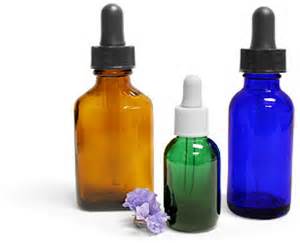
www.ifaroma.org - International Federation of Aromatherapists
© ifaroma.
All rights reserved.
Pure essential oils must never be stored in plastic bottles because they are
very concentrated, chemically active substances, and will therefore have an
effect on any chemical substance or otherwise that they come into contact
with. They are living organisms; they deteriorate gradually over time
as more oxygen gets to them or sunlight, heat etc. What happens with plastic
is that the oils will break down the plastic and it will leach into the
essential oils.
If the essential oils are mixed into carrier oils, creams, lotions, gels,
etc. they are not as concentrated and so it will take a lot longer before any
chemical reaction happens with the plastic.…it's okay to store a blend of
essential oils in carrier oil for about a three-month period in plastic
bottle - ideally keep refrigerated to help preserve it.
Sunflower oil has its own
naturally occurring vitamin E which acts as a
preservative. Creams or lotions can keep for longer as they are less
chemically active and are more dense and because of this are ok in plastic.
Essential oils must be stored in dark, airtight, glass bottles because
exposure to light, oxygen, and heat causes chemical changes in the oil over
time. All oils need to be kept cold. The ideal temperature is 65°F, although
between 45°-65° is adequate.
top
Consumer
Precautions When Purchasing Oils

www.encyclopedia.com
The adage "You get what you
pay for" usually applies when purchasing essential oils, as bargain oils are
often adulterated, diluted, or synthetic. Pure essential oils can be
expensive; and the cost of an oil will vary depending on its quality and
availability.
Preparations:
The method of extracting an essential oil varies by
plant type. Common methods include water or steam distillation and cold
pressing. Quality essential oils should be unadulterated and extracted from
pure botanicals. Many aromatherapy oils on the market are synthetic and/or
diluted, contain solvents, or are extracted from botanicals grown with
pesticides or herbicides. To ensure best results,
essential oils should be made from pure organic botanicals and labeled by
their full botanical name.
airase.com -
Association for the International Research of Aromatic Science and Education
An important starting point when using EOs for healing purposes is to use
those with unquestionable purity. This can be quite confusing, due to
the fact that labeling laws in the EO industry
are very loose. Many times a bottle states it is “100% pure”, or
“organic”, however these terms are often misleading. Even though the
label implies purity, its contents often contain adulterants, chemical
additives, or have been tampered with in some way. Unfortunately,
there is no one governing agency with the authority to set standards in the EO industry
(Burfield, 2003).
So the bottom line when using EOs is having 100% confidence in the supplier
of the EOs you purchase…
www.cropwatch.org - Therapeutic Grade Essential Oils.pdf
The ‘Therapeutic Grade’ Essential Oils
Disinformation Campaign
Many professional aromatherapists have become unwitting
victims of a marketing ploy by essential oil suppliers, whereby ‘approved
therapeutic grades’ of essential oils are advertised for sale.
Let us be quite clear about this - there is no
such thing as a ‘therapeutic grade essential oil’, and no quality standards
for the authentication or performance of essential oils specifically exist
within aromatherapy per se. This latter situation results from the
failure of professional aromatherapy organisations and aromatherapy
essential oil trading associations to issue a comprehensive set of
aromatherapy oil standards, in spite of individual schemes being put forward
(e.g. the initiative of Jones, 1998)...
So - one of the biggest so-far-unresolved dilemmas
aromatherapists face, is how to tell whether a given essential oil fulfills
the requirements of quality and purity. Many feel that they have to rely on
the supplying company for information or ‘word of mouth’ testimonials.
Inevitably certain companies play on the gullibility of their customers to
make unsubstantiated claims. …
Conclusions .
Potential essential oil buyers should independently
check out the marketing information provided by essential oil traders - do
not be put off asking for any extra information or reassurances that you are
legally entitled to if the situation is not absolutely clear cut. The
professional aromatherapist has a duty to be able to provide all relevant
safety information relevant to to their clients’ treatment(s) and therefore
it is part of ‘due diligence’ to ask questions, require any stipulated
proofs, request an MSDS, ask for compositional data & certificate of origin
of the batch of oil purchased and have their eyes wide open to marketing
ploys & scams of all types - including providing GC’MS print-outs and other
information which relate to other batches of oils entirely, and, of course,
describing essential oils as ‘therapeutic grade’.
See What is Certified Pure Therapeutic Grade
Source -
www.naturalnews.com
Adulteration (the `stretching` or `extending`) of genuine essential oils, in
order to increase profits or to `standardize` an oil, is apparently common
practice within the essential oil industry. It seems `100% essential oil` on
a label is NOT a guarantee that the contents are pure and genuine.
To adulterate something
means to corrupt,
debase, or make impure by the addition of a foreign or inferior substance or
element, especially to
prepare for sale by replacing more valuable with less valuable or inert
ingredients (Merriam-Webster
Dictionary)
…
Lack
of regulation within the essential
oil industry
means consumers should arm themselves with the knowledge of adulteration and
take steps to ensure they are buying genuine essential oils, with full therapeutic
benefits.
Using pure, genuine essential oils means less is needed in order for the oil
to be effective.
This is easily forgotten when we are motivated to buy oils on the false
economy of price. The possibilities for adulteration and contamination
increase with the number of times an essential
oil changes
hands in the production cycle. The ordinary consumer should therefore make
themselves aware of the supply chain, along with the reputation and
standards of both the retailer and the supplier of the essential
oil.
A number of laboratory tests can determine if an essential
oil has
been adulterated but independent testing, especially for buyers of very
small quantities, is a very expensive exercise. Consumers can certainly
request information on testing and analysis done on the oil.
How Can We Detect Adulteration?
Adulteration can be highly sophisticated and impossible to detect without
expert analysis and testing, but there are some clear warning signs that
consumers should look out for.
1. Visible signs
consumers should be aware of include a cloudy appearance or an unusual viscosity.
Increased viscosity can
indicate oxidation and
an oil that is ‘aged’. Viscosity is
the measure of a materials resistance to flow. Sandalwood is an example of
an oil that is
viscous; it’s quite difficult to get drops out of the bottle.
2. The smell of an essential
oil can also be an indication but for those that are unfamiliar with the
odour of a genuine essential
oil, adulteration can be difficult to detect. To determine the purity of
an essential
oil it would be helpful for consumers to become familiar with how a
genuine oil should smell.
3. The cost of an
oil can also be an indication of purity; e.g., rose oil is one of the most
expensive oils to produce so when presented with a ‘cheap’ rose essential
oil it would be wise to investigate its purity.
4. To test for
adulteration with another fixed oil (e.g., a vegetable oil) you can put a
drop of the essential
oil on cloth or blotting paper. If a fixed oil is present a ring of
grease will be left after the essential
oil has fully evaporated; essential oils will usually evaporate
completely after a few hours. For optimal therapeutic benefits
and in the name of safety, it seems we should agree with Shirley Price when
she said “organic oils are best of all…”
top
Defining Quality
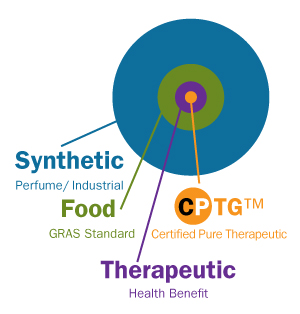
Source -
www.quinessence.com
If you want textbook results
in aromatherapy you must use essential oils that were derived from a single
verified botanical species and a known country of origin, cultivated using
good agricultural practices, harvested at the optimum time, extracted with
expertise, stored and transported correctly – and not subjected to any form
of adulteration.
An adulterated essential oil simply can't compete
with the therapeutic power of a good quality essential oil, since it will
not have a high enough percentage of the necessary active constituents to
deliver an effective treatment. Having been diluted with a foreign substance
to lower its price, this is the very opposite of a good quality essential
oil.
Quality defined
The term 'quality' when applied to essential oils can
be very subjective, since each industry that uses them does so according to
their own specific requirements and standards, and the needs of the
aromatherapy market are quite different to those of the flavour and
perfumery industries, for example. Above all else in aromatherapy we need
essential oils that are therapeutically active, whereas for the perfumer or
flavourist it is the aroma or taste that is the primary concern.
Of course, aroma is important to healthcare
professionals, but the prime
consideration must always be the healing benefits of an essential oil.
So the first thing we discover about the notion of quality is that it can
only be measured in relation to the purpose it will be used for.
What is Certified Pure
Therapeutic Grade?
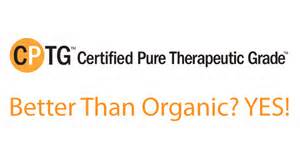
doterrablog.com
- The purity of an essential oil is its most important characteristic.
Proper methods of growing, harvesting, and distilling are crucial to
maintaining purity. Poor production practices and the development of
synthetic essential oil variations suggest that it is impossible to
accurately identify a pure essential oil without scientific analysis.
dōTERRA employs its testing methods for validation of quality at multiple
production points. Directly after plant selection, harvesting, and
distillation, each essential oil is reviewed for chemical composition. A
second testing sequence is initiated when the oil is received at our
production facility to ensure that what was distilled and tested is the same
essential oil received. A third review of the chemistry is conducted in a
three-phase procedure during the actual filling process. Each of these
testing steps confirms that the essential oil has remained free of
contaminants and unexpected alterations during production.
Organoleptic testing
involves the use of the human senses— sight, smell, taste, and touch. To
expert distillers, the senses are used as the first line of quality testing
to provide immediate clues to the acceptability of a product. Oil that has
an unusual smell, uneven consistency, or strange color instantly tells the
distiller that something is wrong. Often times, this testing is used as a
preliminary quality control step before any other tests are conducted.
Microbial testing involves
analyzing a batch of essential oils for the presence of bio-hazardous
microorganisms such as fungi, bacteria, viruses, and mold. The process
involves drawing a sample and then adding that sample to a sterile growth
medium in an enclosed dish or plate. The sample is incubated for a period of
time and then observed for microbial growth. This test is performed on
product entering the manufacturing facility and on finished products prior
to distribution to ensure that the product has not been contaminated during
the filling process.
In
Gas Chromatography, an essential
oil is vaporized and passed through a long column to separate the oil into
its individual components. Each component will travel through the column at
a different speed, depending on its molecular weight and chemical properties,
and is measured as it exits the column. Using this testing method,
quality control analysts can determine which compounds are present in a test
sample.
Mass Spectrometry is used
together with Gas Chromatography to further determine the composition of an
essential oil. In Mass Spectrometry, the constituents previously separated
by GC are ionized and sent through a series of magnetic fields. Using
molecular weight and charge, the amount of each constituent can be
identified, providing additional insights into the potency of the essential
oil.
Fourier Transform Infrared
Spectroscopy (FTIR) is conducted to ensure the potency and consistent
quality of a batch of essential oil. This testing method identifies the
structural components of essential oil compounds. In an FTIR scan, infrared
light of different frequencies is shined through a sample of essential oil
and the amount of light absorbed by the sample is measured. The quality of
the sample is determined by comparing the results from an FTIR reading to a
historical database with absorption patterns of high quality samples.
Heavy Metal testing shows the
amount of heavy metal content in the essential oil. When properly distilled,
essential oils should not contain heavy metals. ICP-MS testing uses a
high-energy medium called Inductively Coupled Plasma (ICP) to ionize the
sample. The sample is then run through a mass spectroscope, which separates
the sample into its elemental parts and provides a reading about which
elements are present and at what quantities.
Sourcing
Testing – Oils are sourced from
the most potent geographic origin.
www.doterratools.com - CPTG Testing Methods.pdf
View Here the
CPTG quality protocol for independent laboratories'
standardization and testing.
Source
www.penny-price.com
- Penny Price Academy
The
ultimate value of the essential oils used is totally dependent on the quality of
the live plants, the way the oils are extracted, and the way they are handled
after extraction. High standards that focus on product purity are critically
important.
The best oils come from wild, naturally farmed or organically
grown plants. Quality oils will always be priced according to the value and
rarity of the particular oil, and will never be lumped into one price point
based on bottle size…
Farming
methods
employed
for growing oil producing plants for aromatherapy should be free of pesticides,
artificial fertilizer, located away from main roads and grown in countries with
suitable weather conditions. Many
factors influence the growth – the amount of sun and rain, the soil condition,
the height above sea level. The
nearer the sun, the cleaner the air and the more energy is absorbed by the
plant…to read in entirety…
www.penny-price.com
Source -
aromaticscience.com
This modern evolution of essential oil use encourages
many people to seek options for their own wellness, to effectively manage
their health on a day-to-day basis, and to have alternatives to manage
health issues as they arise. Many health professionals are effectively
incorporating essential oils into their practices. Modern consumers are
drawn to oils as effective alternatives to drugs. Many essential oils are
now even found on the GRAS list and more relevant toxicology information is
becoming available. These advances allow an educated user of essential oils
to apply a more targeted approach to wellness based on science rather than
solely on tradition or folk wisdom.
Modern technology also makes possible the testing
for purity and efficacy of plant extracts of all kinds while controlling
both quality and content in a way that allows for a much more consistent
essential oil experience. Though no governing body exists to enforce a
universal standard on oil quality, some suppliers have implemented testing
to monitor their essential oils and to ensure a superb product. Though
critics might dismiss this practice as potentially biased, a self-created
standard can put into place very high standards that would exceed any
proposed universal guidelines. The terminology behind these quality
standards may be unique to a given company, but the oils should:
-
Contain only the natural
aromatic compounds present after the distillation process.
-
Be 100% pure oil, free of any synthetic compounds
or contaminants, including heavy metals or microbial organisms.
-
Be subjected to mass spectrometry, infrared
spectroscopy, and gas chromatography testing to ensure consistent
extract composition and activity.
-
Be derived only from the distillation of the
correct and clearly stated plant part.
-
Meet organoleptic tests
(consistency in taste, sight, touch, and smell).
Organic sourcing can be very expensive and difficult
due to differing or non-existent standards in the hundreds of countries
where essential oils are harvested. If you can be assured that each batch is
tested for residue, that clean farming is practiced (meaning only the plant
of interest is included in the harvest), and that the product is confirmed
to contain only aromatic compounds, then you will meet or exceed organic
certification.
By following these protocols, a consistent quality
product can be sourced; thereby allowing mainstream health care
professionals, educated users, and alternative healers to all have access to
the purest oils possible. More importantly, the efficacy of the oil becomes
consistent and reliable, a hallmark of trust and an expectation of those who
are accustomed to pharmaceutical-grade products.
top
Essential Oils' Industry
Standards Testing
Testing
Quality Standards:
What Does GC/MS
Testing Mean?
GC/MS stands for Gas Chromatography and Mass
Spectrometry. Gas Chromatography (GC) is a method of separating the volatile
compounds in essential oils into individual components. Mass
Spectrometry (MS) identifies each of these components and their percentages.
This process can also tell us if the essential oil has been adulterated.
All the main components and some of the trace components will be listed on
these reports.
The precise breakdown of the chemical components in an
individual oil is SO important! Why? Because the therapeutic benefits
and safety issues of an essential
oils are determined by their chemical
composition. This
process is vital for medicinal blending and quality assurance!
You can expect to pay a little more for essential oil
that have been batch-specific tested, but it is money well spent when you
want purity and the best results possible from your blends.
www.ncbi.nlm.nih.gov (National
Institute of Health)
reports,
|
